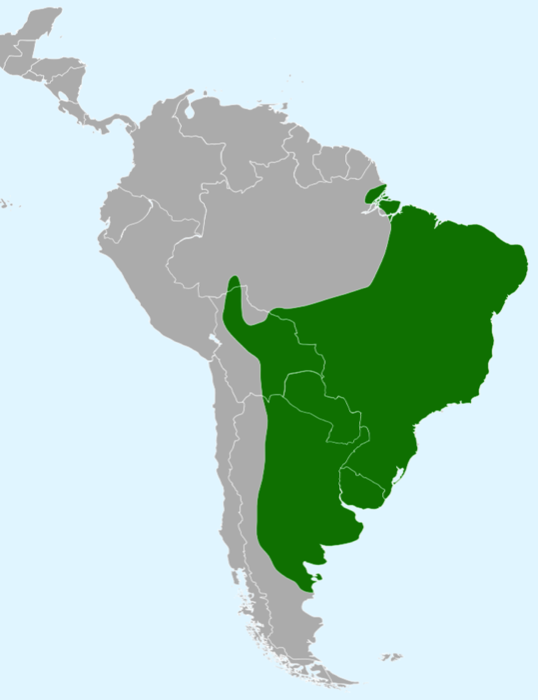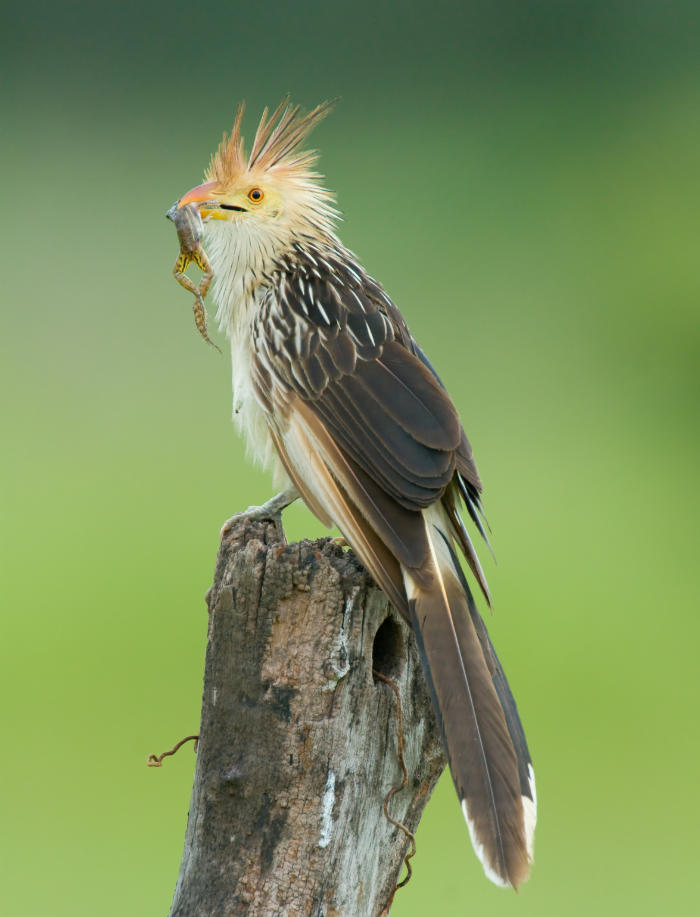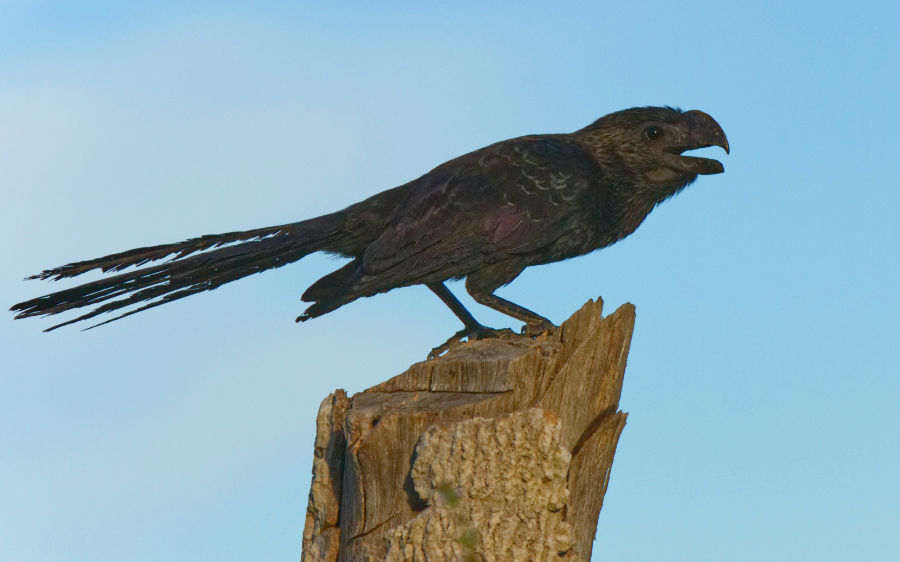Guira Cuckoo
Guira Cuckoo
Known locally as the Anu-Branco, the Guira Cuckoo is a non-parasitic cuckoo species found in southern Brazil, Bolivia, Paraguay, Uruguay and northern Argentina - and is one of several cuckoo species found in the Pantanal.
Overview
The Guira cuckoo is highly social, often appearing in groups of 6-8 birds - although groups sometimes grow to around 20 individuals. They also have a pungent odour which is noticeable if you get very close, and around their night roost. The odour is produced by glands, but its significance is unknown - it could possibly a signal to social partners, or may simply be something unpleasant making them less attractive to predators.
Other Cuckoo Species in the Pantanal
Behaviour and Habitat
The birds have a varied (and opportunistic) diet consisting of frogs, lizards, eggs, insects, nestlings of other birds, and mice. They're slow and clumsy fliers, and will mostly just hop or glide from perch to perch.
Scientific Name
Guira Guira

Local Name
Anu-Branco

Description
Cuckoo measuring 36-40 cm in length, with a shaggy appearance. Has robust legs, long tail-feathers, streaked dark brown plumage, with a cream-coloured underside and head, and rough orange-tinted crest. Highly social, often seen in grassland areas in groups of 6-8 birds.
Reproduction
The nest, itself, is typically built on a tree fork 2 to 5 m above the ground, and may contain around 20 eggs. The eggs are dark green colour, but covered with a chalky-white outer layer. Incubation takes 13-15 days, with another 10 days to reach fledging stage. The juveniles leave the nest before they can properly fly but will remain close by,, under the care of their parents for a short while afterwards.
Conservation and Threats
Quick Facts
- When cold or raining, Guira cuckoos huddle closely together to maintain body warmth.
- The bird's name comes from the indigenous Tupi indian name Guirá-acangatara (wi'rá akãnga'tara) which means bird with the headdress - probably referring to its crest, which resembles an indigenous ceremonial headdress.
- The Guira cuckoo is known by many different names within Brazil. Although most commonly known as Anu-branco, it's also known by the names: anu-do-campo (field cuckoo), pelincho, guirá-acangatara, piló, piriguá, piririta, quiriquiri, quiriru, Rabo-de-palha (tail of straw), and alma-de-gato (soul of the cat),
- In areas where Guira cuckoo are feeding, there's always a sentry to give the alarm at the approach of intruders - such as hawks or people.
Smooth-billed Ani or Anu Preto is a very similar species, aside from it's coloration. This frequently populates areas alongside the Guira Cuckoo. Credit: Andrew Mercer
Banner image: Guira Cuckoo on the Corumbá waterfront (Andrew Mercer)


